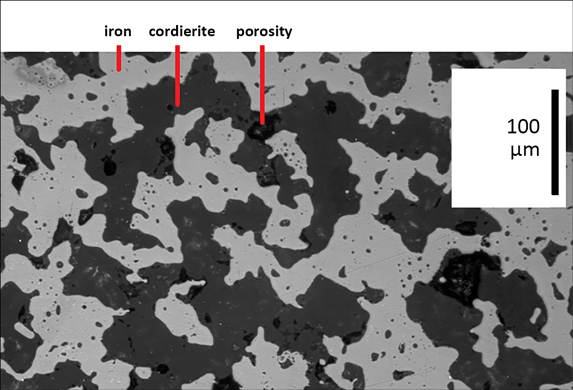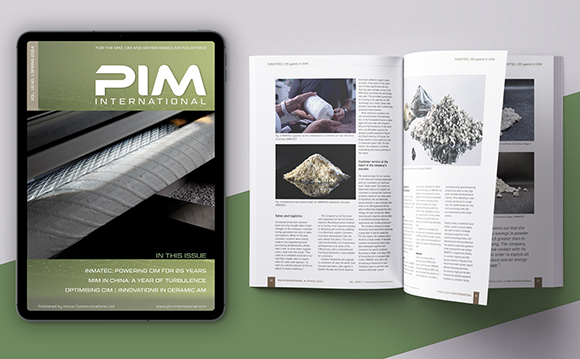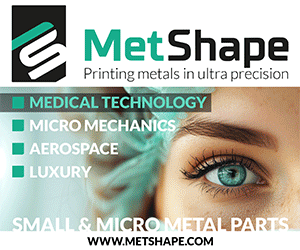ARTICLE: Opportunities in the PIM of Particulate Composites
April 8, 2016
At the first PIM Symposium in 1990, the Marketing Manager for a leading MIM facility outlined where and how MIM would grow. His analysis was based on the conversion of small investment castings to MIM. Although his predictions took a while, MIM did reach those sales predictions. Now MIM is seeking the next big thing.
One opportunity for differentiation comes from mixed powder composites. The field of particulate composites is poorly organised and poorly recognised by suppliers, yet the products have significant added value since there are few competitive processes for complex shaped composites. Prof Randall German reviews emerging opportunities and introduces promising compositions and processing options and applications.
A sense of the growth in MIM comes from recounting statistics presented at the first Powder Injection Molding Symposium held in 1990 at Rensselaer Polytechnic Institute, Troy, New York State. The Marketing Manager for Advanced Forming Technology projected US MIM would reach $350 million in annual sales, largely through the conversion of investment casting designs, especially stainless steels.
This projection arose from the examination of designs where the customer would see lower cost with superior quality. At that time, global PIM sales were $91 million, of which 63% came from the metals segment, dominated by the US MIM industry at $45 million. This means that US MIM was only at about 13% of the projected plateau. Accordingly, attention went into marketing MIM to designers frustrated with investment casting; early successes were in orthodontic brackets, surgical tools, watch components, firearm components and computer hard drive parts.
Years later, ferrous MIM in the US is approaching the projected $350 million plateau (not correcting for inflation), while global MIM sales (largely stainless steel) exceed about $1.2 billion. On the other hand, worldwide metal casting is a $37 billion industry. The MIM effort is focused on small, complicated parts and higher temperature materials, mostly ferrous alloys. On the other hand, the casting industry goes beyond ferrous alloys to include a diverse range of metals such as aluminium, titanium, nickel-alloys, copper-alloys, magnesium, zinc and lead. Several of these metals are not widely embraced by MIM, simply due to high costs.
It is appropriate to consider where the next wave of growth might arise. The easy projects are past, so further growth will require something beyond design conversions. New materials are widely discussed, such as titanium, aluminium and superalloys. These have baseline cost structures set by casting technologies where MIM struggles due to powder cost. Thus, significant growth requires something more, such as a combination of new materials and new properties. One such opportunity is in particulate composites, many of which cannot be processed by casting yet are naturally aligned with injection moulding and sintering.
Background to particulate composites
A composite is a mixture of two or more phases, where each phase is distinguishable based on differences in atomic structure or composition. An example is illustrated in Fig. 1, a magnified image from a sintered iron-cordierite composite. This cross-sectional microstructure image contrasts phases using differences in reflectivity. The two phases form interlaced three-dimensional networks, with a little residual porosity. In terms of properties, the iron is soft, conductive, magnetic and ductile, while cordierite is an oxide compound (2MgO-2Al2O3-5SiO2) that is hard, non-conductive, non-magnetic and stiff, with low thermal expansion coefficient. The two phases are essentially insoluble in one another, so the composite is magnetic, conductive, low in thermal expansion, yet can be brazed to silicon. This combination of properties is desirable for use as an electronic diode substrate, enabling automated assembly.

Fig. 1 Cross-sectional micrograph of a sintered iron-cordierite composite with intertwined phases (Courtesy L. Shaw)
Novel property combinations are key to success with particulate composites. In any composite, there are four options:
- Properties are dominated by one phase,
- Properties are intermediate between that of the two phases,
- Properties are advanced over that attainable with either phase alone,
- Properties are degraded below that of both phases.
Using hardness, Table 1 compiles examples for each of the four situations. Compositions are given in percent, so WC-8Co implies 92 wt.% tungsten carbide. In that first case of WC-8Co, the composite hardness is nearly the same as that of the harder tungsten carbide phase. In the second case of W-30Ag, the composite hardness is intermediate between that of the two constituent phases. In this system, hardness is almost a straight line function of the volume percent tungsten.
In the third case, corresponding to alumina (Al2O3) with 20% silicon nitride (Si3N4), the composite hardness is higher than either constituent. In the last case, corresponding to alumina-zirconia, the composite hardness is inferior to either constituent. This happens in systems optimised for one property while a separate property is sacrificed. In the case of the alumina-zirconia composite, the facture toughness is optimised with a sacrifice of hardness. There are applications where inferior properties are desired. Practice ammunition is an example. The idea is to replace lead with a bullet similar in mass and aerodynamics. Practice bullets desirably shatter on striking the target to avoid ricochets. A copper-tin composite is designed to shatter on target impact, where the tin is intentionally used to form a brittle intermetallic phase to cause disintegration on striking a target.
Particulate composites synthesise new property combinations. Many notable combinations are encountered, such as the following:
- High hardness and toughness: diamond – cemented carbide,
- High wear resistance and electrical conductivity: tungsten – copper,
- Soft magnetic response in a non-conductive structure: iron – cellulose,
- High thermal conductivity and low thermal expansion: aluminium nitride – copper,
- High toughness and high density tungsten – nickel + iron,
- High stiffness and low density aluminium – silicon carbide.
- 1/2
- Next

















